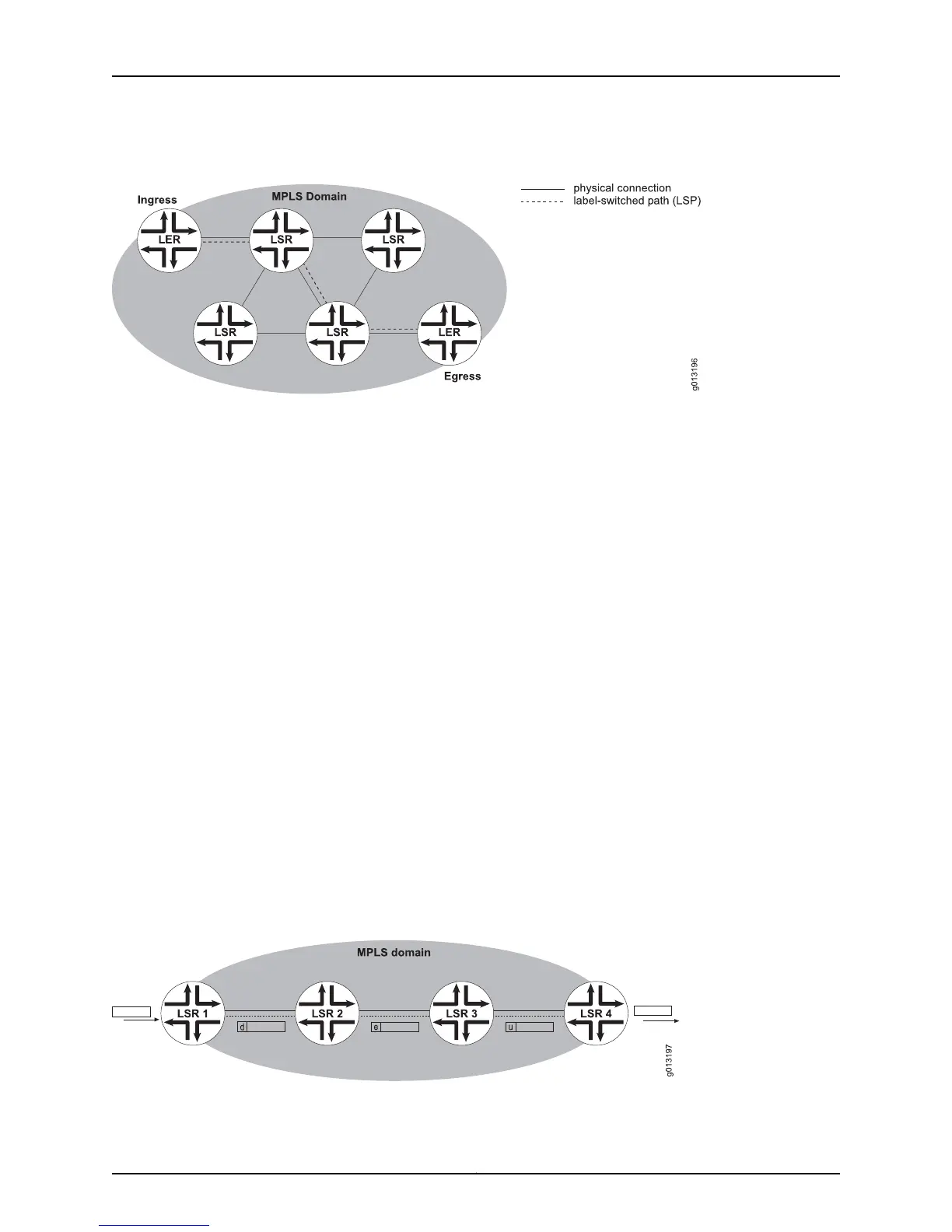Figure 47: Simple MPLS Domain
MPLS LSRs
Each LSR, also known as an MPLS node, must have the following:
•
At least one layer 3 routing protocol
•
A label distribution protocol
•
The ability to forward packets based on their labels
The router can use BGP, IS-IS, or OSPF as its layer 3 routing protocol, and BGP, LDP, or
RSVP-TE as its label distribution protocol.
MPLS Label Switching: Push, Look Up, and Pop
MPLS can label packets by using the existing layer 2 header or an encapsulation header
that carries the MPLS label. During LSP negotiation, the LSRs in an MPLS domain agree
on a labeling method. Labels have only local meaning; that is, meaning for two LSR peers.
Each pair of LSRs—consisting of a label originator and a label acceptor—must use a label
distribution protocol to agree on the label-to-FEC binding.
Because of the local label assignment, packet labels typically change at each segment
in the LSP path, as shown in Figure 48 on page 219. The ingress node, LSR 1, receives an
unlabeled data packet and prepends label d to the packet. LSR 2 receives the packet,
removes label d and uses it as an index in its forwarding table to find the next label. LSR
2 prepends label e to the packet. LSR 3 does the same thing, removing label e and
prepending label u. Finally, the egress node, LSR 4, removes label u and determines where
to forward the packet outside the MPLS domain.
Figure 48: Label Switching
219Copyright © 2010, Juniper Networks, Inc.
Chapter 3: MPLS Overview

